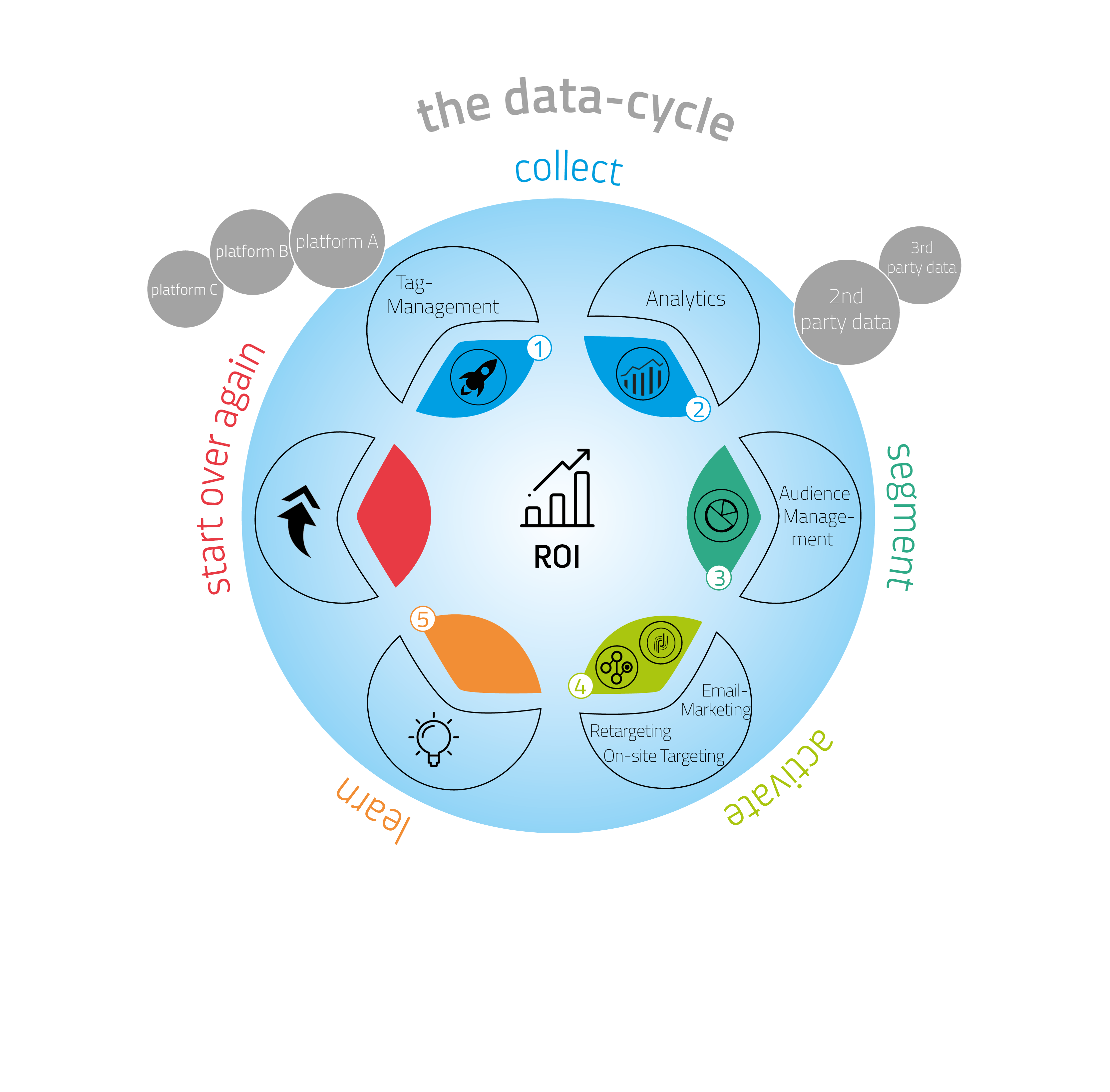When data is useless
Since a couple of years, there is a big talk going on about „data – the new oil“. In addition to that, new technologies are the reason that data storage is becoming cheaper over the years. As a result, companies started to collect and store tons of data without really having a strategy on what to do next. The problem is, if nothing happens with the collected data afterwards, no business value is added. However, the purpose of every company is to increase their ROI to be able to compete in the market by using data analysis.
How becomes data valuable?
The „data-cycle“ is designed to make data valuable. It shows which steps can be necessary to transform raw data into valuable knowledge. To apply this, you should activate the structured data.

Data-cycle steps
Collect (1 & 2)
First of all, facts collected from different platforms have to be converted into useful data by interpreting, organizing and visualizing it. In the Adobe environment, the Adobe Analytics is the key tool to collect and organize the data of user behavior of your website and your apps. It also has a basic function to visualize the data. Adobe’s tag manager Adobe Launch can help create a rule-based implementation. Testing the implementation, either manually or by the use of automated auditing tools, is mandatory to establish and maintain a solid data quality.
Segment (3)
Now, with data management tools like the Audience Manager, you can consolidate the data and manage it from all sources. User segments can be built and managed centrally. Furthermore, you can share them with all stakeholders on request.
Activate (4)
It is easy to start targeting, email marketing or retargeting (e.g. with Adobe Campaign and Adobe Target) by using the segments created before. Activation can also mean to improve the user experience or optimize a funnel, f.i. shorten the purchasing process on a retail website.
Learn (5)
After examining the results und learning from them, knowledge can finally be gained, and challenges turn into opportunities. Don’t forget to share this with your colleagues. Together, you are now able to make important data-driven decisions.
Start over again
Start again by improving the tracking quality, if necessary. If you’re on a solid base, you can start with new tracking requirements. The data circle is a never-ending process and should be considered continuously.
Data activation is the key
In conclusion, stored data is useless until it is activated. Only then it can be used to make data-driven decisions and lead to growth and success of companies.